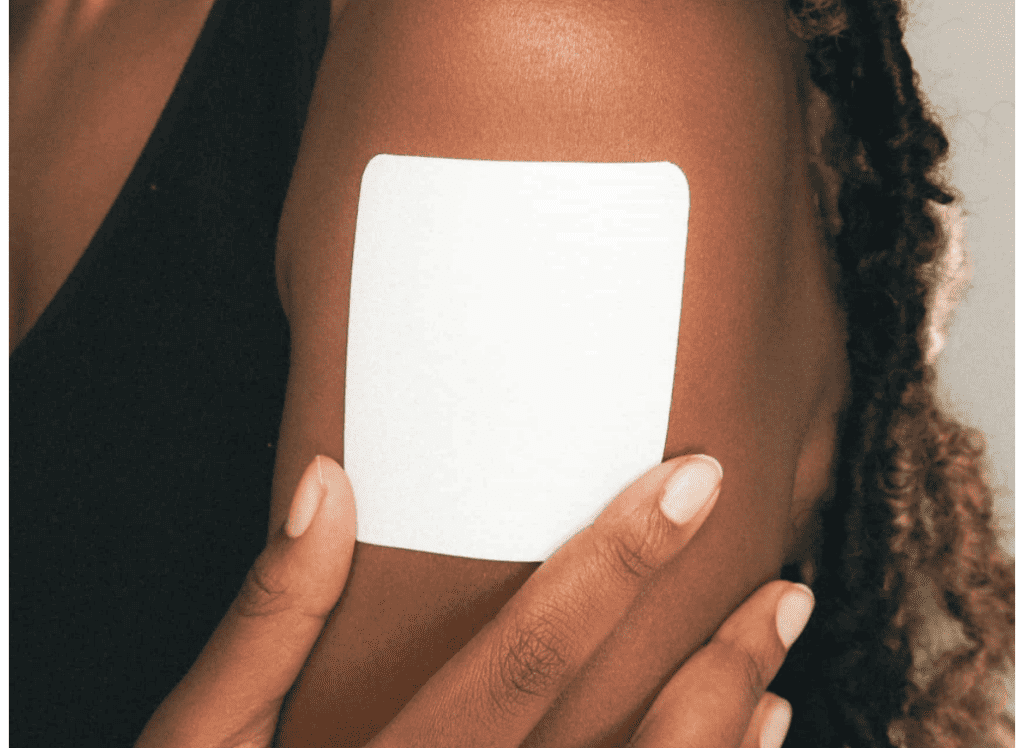Spend $50 and get FREE SHIPPING

Unveiling the Science Behind Transdermal CBD Patches for Pain Relief
“I haven’t been able to golf since I threw my back out three years ago. These get me through a round and then-some. There’s just nothing like it..”
In the realm of alternative medicine, CBD has surged in popularity for its potential in managing various conditions, notably pain. Among the diverse forms of CBD administration, transdermal patches have garnered attention for their convenience and effectiveness in delivering targeted relief. Let’s delve into the science behind transdermal patches and their role in administering CBD for pain management.
Understanding Transdermal Patches:
Transdermal patches are medical delivery systems adhered to the skin, allowing medication to enter the bloodstream directly through the skin’s surface. Unlike topical solutions that primarily target localized areas, transdermal patches deliver compounds systematically, ensuring a controlled and sustained release of medication over an extended period.
Mechanism of Action:
The skin, our largest organ, acts as a barrier but is also permeable to certain substances. Transdermal patches leverage this property using specialized formulations containing CBD and permeation enhancers. These patches are designed to facilitate the passage of CBD molecules through the skin and into the bloodstream.
CBD and Pain Management:
Cannabidiol (CBD), a non-psychoactive compound from the cannabis plant, interacts with the body’s endocannabinoid system (ECS). The ECS regulates various physiological functions, including pain sensation, mood, and inflammation.
Studies suggest that CBD interacts with cannabinoid receptors in the ECS, influencing neurotransmitter activity and reducing inflammation, alleviating pain. A study published in Frontiers in Pharmacology in 2020 demonstrated the role of CBD in pain management through its interaction with unique receptor called “endocannabinoid receptors” that line the cells of your skin, organs, nervous system and muscles.
Advantages of Transdermal CBD Patches for Pain Relief:
-Precise Dosage Control: Transdermal patches provide a controlled release of CBD, ensuring a consistent dosage over time without sudden peaks or drops in concentration. (European Journal of Pain, 2018)
-Targeted Relief: By applying the patch directly to the affected area, individuals can target specific areas of pain, such as sore muscles or joints. (Journal of Pain Research, 2021)
-Extended Duration: The slow and steady release of CBD from the patch allows for prolonged relief, offering up to eight consistent of relief, depending on the patch’s design. (Cannabis and Cannabinoid Research, 2016)
Reduced Side Effects: Transdermal delivery bypasses the digestive system, reducing the likelihood of gastrointestinal issues often associated with oral CBD consumption. (Molecules, 2019)
How to Use
Using a transdermal CBD patch is relatively straightforward. Clean and dry the area where you’ll apply the patch, then adhere it firmly to the skin on the area where you are experiencing pain. We do not recommend wearing transdermal patches in the shower and do not leave them on any longer than 8 hours.
Conclusion:
Transdermal CBD patches offer an innovative approach to pain management, providing a non-invasive and efficient method for delivering CBD’s therapeutic benefits. While research into the efficacy of CBD for pain relief is ongoing, transdermal patches show promise in providing targeted relief with controlled dosing and minimized side effects.
Consult a healthcare professional before starting any new treatment regimen, especially if you have existing medical conditions or are taking other medications. Transdermal CBD patches can be a valuable addition to pain management strategies, potentially offering a natural alternative for relief.
Ongoing research and advancements will further elucidate the efficacy and nuances of transdermal CBD patches, potentially unlocking new avenues for pain relief and overall wellness.
